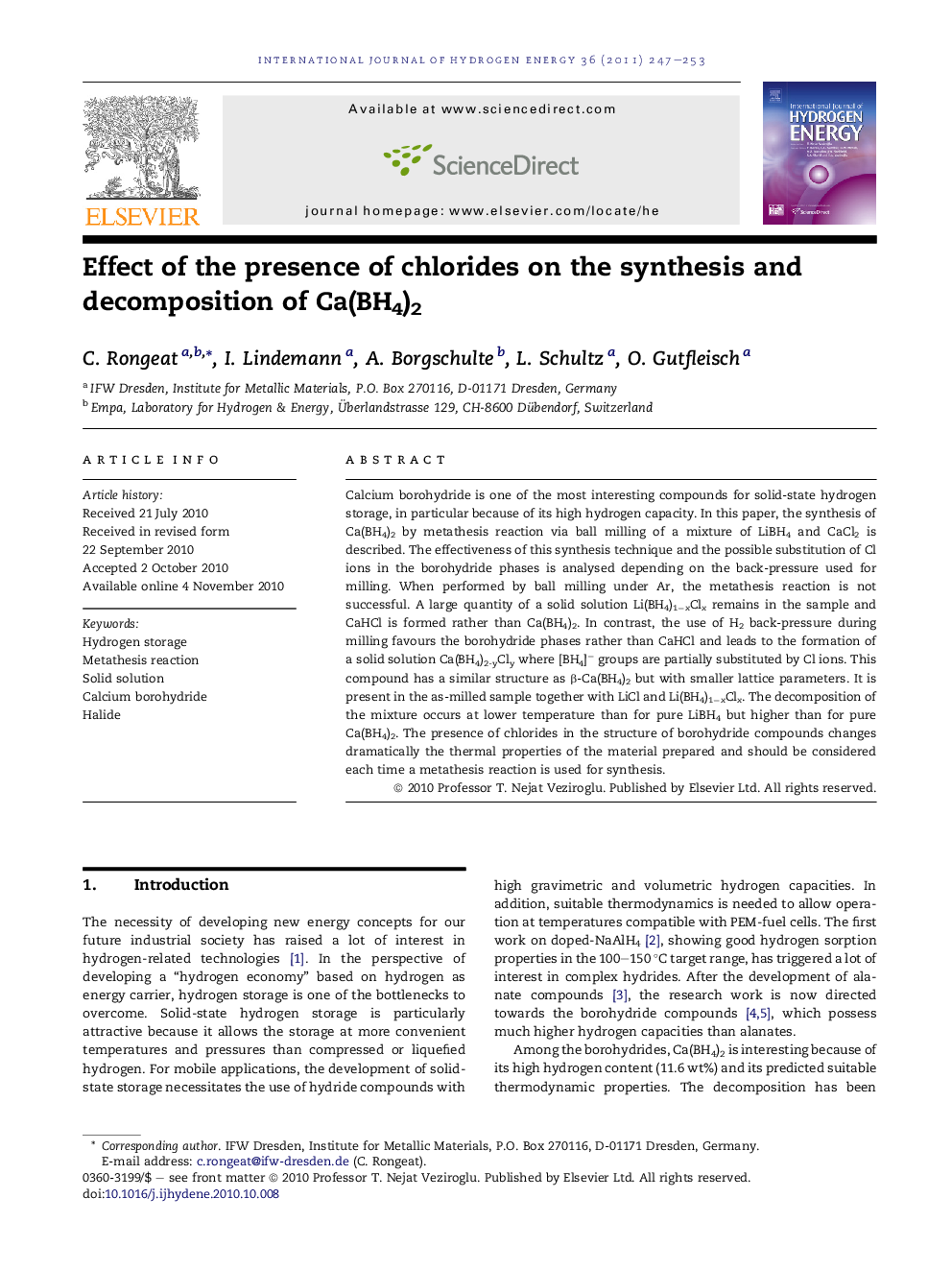| Article ID | Journal | Published Year | Pages | File Type |
|---|---|---|---|---|
| 1277772 | International Journal of Hydrogen Energy | 2011 | 7 Pages |
Calcium borohydride is one of the most interesting compounds for solid-state hydrogen storage, in particular because of its high hydrogen capacity. In this paper, the synthesis of Ca(BH4)2 by metathesis reaction via ball milling of a mixture of LiBH4 and CaCl2 is described. The effectiveness of this synthesis technique and the possible substitution of Cl ions in the borohydride phases is analysed depending on the back-pressure used for milling. When performed by ball milling under Ar, the metathesis reaction is not successful. A large quantity of a solid solution Li(BH4)1−xClx remains in the sample and CaHCl is formed rather than Ca(BH4)2. In contrast, the use of H2 back-pressure during milling favours the borohydride phases rather than CaHCl and leads to the formation of a solid solution Ca(BH4)2-yCly where [BH4]− groups are partially substituted by Cl ions. This compound has a similar structure as β-Ca(BH4)2 but with smaller lattice parameters. It is present in the as-milled sample together with LiCl and Li(BH4)1−xClx. The decomposition of the mixture occurs at lower temperature than for pure LiBH4 but higher than for pure Ca(BH4)2. The presence of chlorides in the structure of borohydride compounds changes dramatically the thermal properties of the material prepared and should be considered each time a metathesis reaction is used for synthesis.
